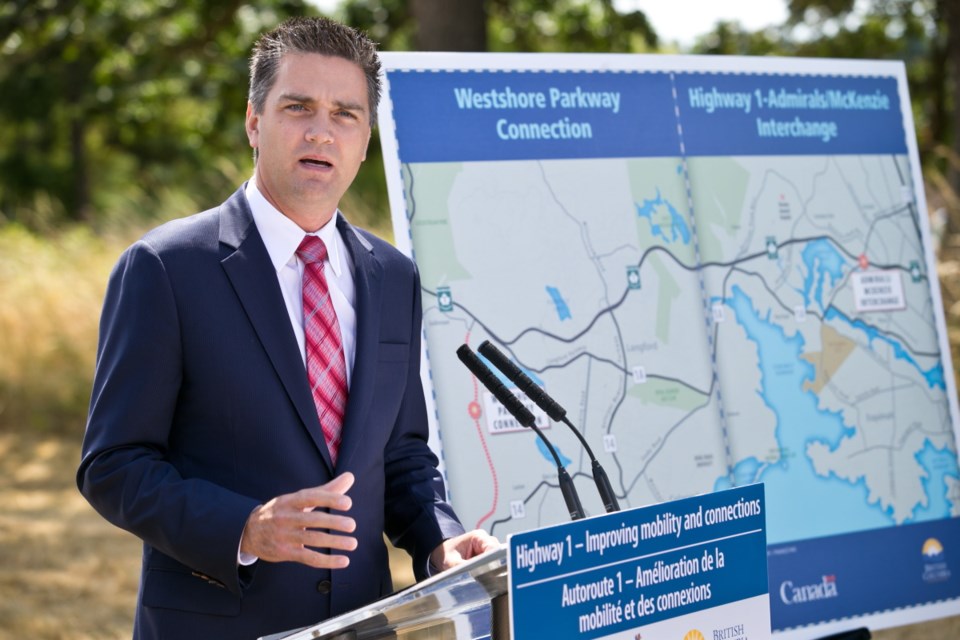 Gabriola Islanders are now either condemned to ride expensive ferries for all time, or be protected from the ravages of highway culture, depending on your perspective.
Gabriola Islanders are now either condemned to ride expensive ferries for all time, or be protected from the ravages of highway culture, depending on your perspective.
Transportation Minister Todd Stone’s quirky study of bridging the island arrived this week and the numbers don’t work, so the idea has been abandoned.
Based on the feasibility report, Stone said a fixed link to Vancouver Island would be technically doable, but not cost-effective.
“There is simply not enough compelling evidence to proceed with further work,” he said. “Our goal is ensure coastal communities are connected in an affordable, efficient and sustainable manner. This study shows that continuation of a coastal ferry service for Gabriola Island residents is the best way to achieve that goal.”
A bridge was a long-shot option to put an end to the perennial argument over fare hikes. But it just started a fresh new argument on the island about bridges. Gabriola had two camps, one for and the other against the $200,000 study, with the no side likely in the majority. The declaration brings the bridge argument to an end, but means the perennial argument over fares will be a fact of life for a long time to come.
NDP MLA Doug Routley accused Stone of “causing enormous grief and tension” by commissioning the study. He said it was just a distraction, announced days before a Union of B.C. Municipalities study on the negative impact of high fares.
Feasibility studies assign values to every impact of the project and then arrive at cost-benefit ratio. The benefits of a Gabriola fixed link are only half the cost, according to the analysis. By contrast, a roughly comparable analysis of Massey Tunnel replacement found a 2-to-1 ratio of benefits. And the Gabriola analysis is the most generous possible cost-benefit interpretation, since it assumed there would be no toll.
The study found Gabriola’s population grew from 2,600 to about 4,000 in the 15 years up to 2006. But it hasn’t grown since then. Nonetheless, it assumes a one per cent growth rate for the foreseeable future, so the same figure is applied to ferry-traffic forecasts. That would translate to 1,220 individual trips a day via ferry by 2044. The ease of use and 24-hour availability of a fixed link would mean about 5,000 trips a day on the bridge by that date.
A fixed link was forecast to double the growth rate. So the island would have 6,760 residents by 2044 with a link, compared to 5,200 without. The bridge proposal would have included drawbacks for cyclists and pedestrians, since the route to Nanaimo would be 20 kilometres longer. It would have forced more people to use vehicles. But it would have cut the average travel time by about 20 minutes for drivers.
The cost of the project depended on the routing and ranged between $258 million to $520 million, with an average of $359 million.
The study was wildly out of line with the established orthodoxy on the island. The official community plan opposes any bridges and has a goal of encouraging “gradual and appropriate” growth, rather than “rapid change and growth.”
The most viable bridge plan would have hop-scotched over smaller Mudge Island, but the official plan there is to keep it as a refuge from urban life. So even a ferry service is opposed there, let alone a bridge.
“Island identity is likely to be fundamentally altered by the provision of a fixed link,” the study said.
The idea also flunked the emissions test badly. The diesel ferry and the vehicles using it would account for 81,000 tonnes of greenhouse-gas emissions over 25 years. A bridge would almost triple that.
The conclusion doesn’t bode well for the dreamers advocating another ferry elimination plan on the Sunshine Coast. A $250,000 study is underway on new bridge and highway layouts that could replace some ferry routes there. It takes most of a day to get from Powell River to Vancouver via two ferries. A new highway-bridge system would reduce that, but it’s over rough, steep terrain and costs would be substantial.
If the numbers don’t add up for a relatively simple project like Gabriola, they’re unlikely to make much sense on the Sunshine Coast.



